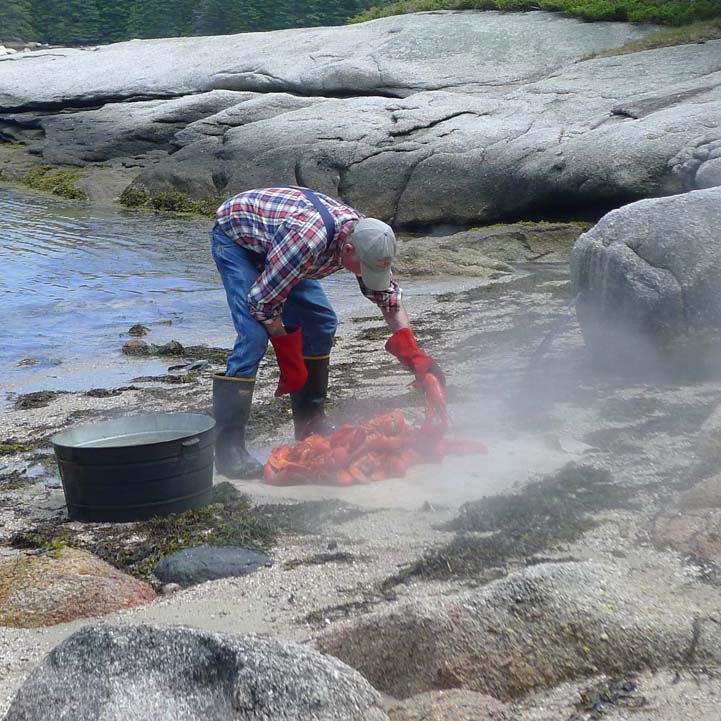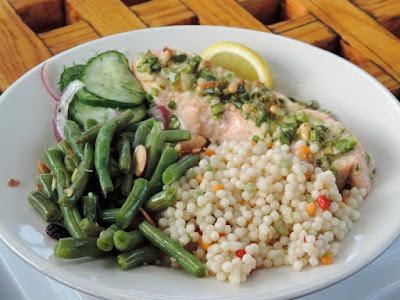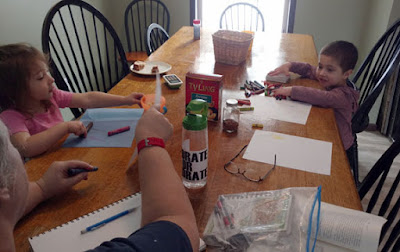Thought and practice moves our painting style, but it’s incremental, just like the Mary Day docking.
| Winch (American Eagle), oil on canvasboard, by Carol L. Douglas, 12X16, $1449 framed. |
Windjammers are slippery little devils. I should know that by now. You think you understand the rhythm of their comings and goings and you find one or two likely candidates and commit to painting them. Then you look away for a moment and you find a subject slipping away from her berth, heading out to sea.
That happened to me on Monday, when I’d stopped to paint before my dentist appointment. (‘Quickie’ has an entirely different meaning to artists than to the rest of the world.) I’d limned in the ketch Angelique, and the light and shadows were notated, but as I sadly watched her slide out of her berth, I knew she wouldn’t be back for days.
“You didn’t take a photo, did you?” asked Ken DeWaard. He knows most of my bad habits, thanks to my friend Terry spilling the beans. I could almost paint Angeliquefrom memory, but that never ends well. I shook my head ruefully, and begged him for a picture. “I’m just enabling you,” he muttered, but he sent it to me anyway.
| Lobster fleet at Eastport, oil on canvas, 24×30, $3478 framed. |
There was still the fine flat transom of the Lewis R. French to paint. She celebrated her 150th birthday this year, and that’s something to celebrate. We both set to again, but not five minutes later, Mary Day hove into view. She was heading for the berth directly in front of us. Normally, that would be a good thing, but it would obliterate the rest of our view.
Mary Day doesn’t have an engine; she’s pushed into place by a tender. It’s fascinating to watch 90’ of wood and sails delicately slide into her berth, guided by a tiny gnat of a boat. Since our subjects had vanished into the rhythm of a working harbor, we had no choice but to sit back and enjoy the spectacle. We talked about color and mark-making.
| Striping (Heritage), oil on canvasboard, 6X8, $435 framed. |
I hold that mark-making is as personal as handwriting. Once you’ve taught someone how to form their letters, you have very little control over the finished product. I’m shocked, sometimes, to see how much my handwriting resembles my mother’s. That’s a real mystery, since I’m a lefty and she was right-handed.
As a teacher, I do influence my students’ marks. “Don’t dab!” I’m wont to say, although I’m well aware that Pierre Bonnard dabbed to great effect. He’s the exception that proves the rule. Dabbing, in the hands of beginners, looks amateurish.
Mostly, I ask them to experiment with all the different things a brush can do and then find their own ways of using them. Once they’ve found that place, it’s pointless to try to shake it up too much. (This is why I don’t encourage palette-knife painting in my classes; it short-circuits this process.)
 |
| Pleasure boats, oil on canvasboard, 12X16, $1159 unframed. Even though this is not ‘my style’, it’s still one of my favorite paintings. |
“There are things that are immutable, and it’s pointless to try to change them,” I said to Ken as we watched Mary Day’s crew work. “For example, I can’t be 6’5” and you can’t have my curly hair.”
“But there are things you can change,” said Ken. He’s right, of course. Our choices of brushes, canvas and pigments all influence our paint application, just as choosing a gel pen makes us write differently than with a pencil. Thought and practice moves our painting style, but it’s incremental, just like the Mary Day docking. Rush that by copying someone else, and you risk being a parody.
I don’t know a single serious artist who thinks he or she is painting well—even the ones who are highly successful. We’re all on a quest; our vision is constantly changing. But through all that, we have something that’s immutable. For lack of a better term, I’ll call it our styles.
























